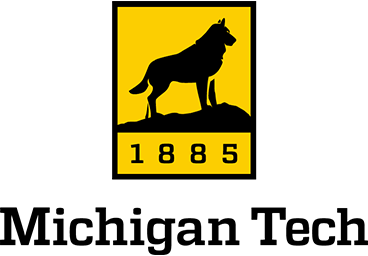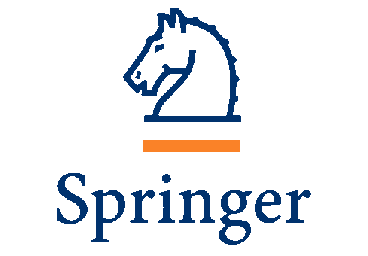Popular Software
COMSOL Multiphysics® is a general-purpose platform software for modeling engineering applications. You can use the core package on its own or expand its functionality with any combination of add-on modules for simulating designs and processes based on electromagnetics, structural mechanics, acoustics, fluid flow, heat transfer, and chemical engineering behavior. The add-on modules and LiveLink™ products connect seamlessly via one integrated software environment. This means that your modeling workflow remains the same regardless of what you are modeling. You can combine as many expansion products as you need.
The Application Builder in COMSOL Multiphysics® makes it possible for simulation experts to create intuitive and dedicated user interfaces for their otherwise general computer models — ready-to-use custom apps. You can run apps using COMSOL Multiphysics® or COMSOL Server™, which is a product for deploying, managing, and running apps that were made with the Application Builder. Use this tool to make apps accessible to colleagues, partners, or customers worldwide.
Modern products are complex. A detailed understanding of how they perform is key to ensuring safe and reliable function. Fluid forces, thermal effects, structural integrity and electromagnetic radiation can all impact performance. If you isolate these forces and examine them separately, you may not get an accurate prediction of product behavior. ANSYS Multiphysics solutions can help you examine these effects in any combination, achieving the highest fidelity solution to eliminate reliability problems and design safe and effective products.
FEATool Multiphysics ("Finite Element Analysis Toolbox for Multiphysics") is a physics, finite element analysis (FEA), and PDE simulation toolbox for MATLAB, GNU Octave, and the cloud with rollApp. FEATool Multiphysics features the ability to model fully coupled heat transfer, fluid dynamics, chemical engineering, structural mechanics, electromagnetics, as well as user-defined and custom PDE problems in 1D, 2D (axisymmetry), or 3D, all within a simple graphical user interface (GUI) or as convenient MATLAB m-code script files. Having specifically been designed to have a low learning curve and to be able to be used without requiring reading documentation, FEATool has been employed and used in academic research, teaching, and industrial engineering simulation contexts.
ADINA is used in industry and academia to solve structural, fluid, heat transfer and electromagnetic problems. ADINA can also be used to solve multiphysics problems, including fluid-structure interactions and thermo-mechanical problems.
Rocstar Multiphysics is designed to conquer engineering problems of large scale. Rocstar is engineered for the fields of solid propellant rocket and missile design, multiphysics-dependent engineering and manufacturing simulations, and other highly complex, high-performance applications. Including state-of-the-art physics modules and coupling algorithms, Rocstar targets users who need ironclad solutions to high-cost, time-intensive problems that require extensive computational capability.
The OOFELIE::Multiphysics Suite provides you with unique capabilities to analyze industrial applications such as:
-Sensors and actuators, including MEMS (Micro-Electro-Mechanical Systems)
-Optomechanical systems including MOEMS (Micro-Opto-Electro-Mechanical Systems
-Multidisciplinary systems where an interaction exists between a fluid medium and a structure (F.S.I. - Fluid Structure Interaction)
The OOFELIE::Multiphysics Suite is composed of three major components:
1. OOFELIE::UI, the parametric graphical user interface
2. OOFELIE::Multiphysics Solver, the multiple field solver to predict the behaviour of your application
3. OOFELIE::ADX, the solution to explore the design space and optimize your model
The OOFELIE::Multiphysics Solver is integrated in an engineering standard, intuitive user interface providing time-saving design flow including scripting parameterization and optimization. Fully and strongly coupled FEM/BEM/FMM simulations between relevant physical phenomena yield fast convergence and efficient handling of supersized problems.
The OOFELIE::Multiphysics Solver combines thermics, mechanics, acoustics, electrics fields and couplings (electrostatics, piezoresitive, vibro-acoustics, piezoelectric, peltier, circuits, FEM fluids, Optics links, MEMS and electromagnetic features in one single CAE environment.
PLAXIS 2D and PLAXIS 3D are computer programs that perform finite element analyses (FEA) within the realm of geotechnical engineering, including deformation, stability and water flow. The input procedures enable the enhanced output facilities provide a detailed presentation of computational results. PLAXIS enables new users to work with the package after only a few hours of training.
MIDAS is a Finite Element Analysis software developed by MIDASoft, used for bridge analysis and design. midas Civil combines the powerful pre-and post-processing features with an extremely fast solver, which makes bridge modeling and analysis simple, quick, and effective. Also, there are several easy parameter modification tools available that can be used for parametric analysis leading to optimized and economical design.
MOOSE (Multiphysics Object Oriented Simulation Environment) is an object-oriented C++ finite element framework for the development of tightly coupled multiphysics solvers from Idaho National Laboratory. MOOSE makes use of the PETSc non-linear solver package and libmesh to provide the finite element discretization.
MOOSE is a development and run-time environment for the solution of multi-physics systems that involve multiple physical models or multiple simultaneous physical phenomena. The systems are generally represented (modeled) as a system of fully coupled nonlinear partial differential equation systems (an example of a multi-physics system is the thermal feedback effect upon neutronics cross-sections where the cross-sections are a function of the heat transfer). Inside MOOSE, the Jacobian-Free Newton Krylov (JFNK) method is implemented as a parallel nonlinear solver that naturally supports effective coupling between physics equation systems (or Kernels). The physics Kernels are designed to contribute to the nonlinear residual, which is then minimized inside of MOOSE. MOOSE provides a comprehensive set of finite element support capabilities (libMesh) and provides for mesh adaptation and parallel execution. The framework heavily leverages software libraries from the Department of Energy (DOE) and the National Nuclear Security Administration (NNSA), such as the nonlinear solver capabilities in either the Portable, Extensible Toolkit for Scientific Computation (PETSc) project or the Trilinos project.
Advanced Simulation Library (ASL) is a free and open source hardware accelerated multiphysics simulation platform (and an extensible general purpose tool for solving Partial Differential Equations). Its computational engine is written in OpenCL and utilizes matrix-free solution techniques which enable extraordinarily high performance, memory efficiency and deployability on a variety of massively parallel architectures, ranging from inexpensive FPGAs, DSPs and GPUs up to heterogeneous clusters and supercomputers. The engine is hidden entirely behind simple C++ classes, so that no OpenCL knowledge is required from application programmers. Mesh-free, immersed boundary approach allows one to move from CAD directly to simulation drastically reducing pre-processing efforts and amount of potential errors. ASL can be used to model various coupled physical and chemical phenomena and employed in a multitude of fields: computational fluid dynamics, virtual sensing, industrial process data validation and reconciliation, image-guided surgery, computer-aided engineering, design space exploration, crystallography, etc.
LS-DYNA is a general-purpose finite element program capable of simulating complex real world problems. It is used by the automobile, aerospace, construction, military, manufacturing, and bioengineering industries. LS-DYNA is optimized for shared and distributed memory Unix, Linux, and Windows based, platforms, and it is fully QA'd by LSTC. The code's origins lie in highly nonlinear, transient dynamic finite element analysis using explicit time integration.
"Nonlinear" means at least one (and sometimes all) of the following complications:
-Changing boundary conditions (such as contact between parts that changes over time)
-Large deformations (for example the crumpling of sheet metal parts)
-Nonlinear materials that do not exhibit ideally elastic behavior (for example thermoplastic polymers)
"Transient dynamic" means analyzing high speed, short duration events where inertial forces are important. Typical uses include:
-Automotive crash (deformation of chassis, airbag inflation, seatbelt tensioning)
-Explosions (underwater Naval mine, shaped charges)
-Manufacturing (sheet metal stamping)
LS-DYNA's potential applications are numerous and can be tailored to many fields. In a given simulation, any of LS-DYNA's many features can be combined to model a wide range of physical events. An example of a simulation, which involves a unique combination of features, is the NASA JPL Mars Pathfinder landing simulation which simulated the space probe's use of airbags to aid in its landing. LS-DYNA is one of the most flexible finite element analysis software packages available.
LS-DYNA consists of a single executable file and is entirely command line driven. Therefore all that is required to run LS-DYNA is a command shell, the executable, an input file, and enough free disk space to run the calculation. All input files are in simple ASCII format and thus can be prepared using any text editor. Input files can also be prepared with the instant aid of a graphical preprocessor.
There are many third party software products available for preprocessing LS-DYNA input files. LSTC also develops its own preprocessor, LS-PrePost, which is freely distributed and runs without a license. Licensees of LS-DYNA automatically have access to all of the program's capabilities, from simple linear static mechanical analysis up to advanced thermal and flow solving methods. Furthermore, they have full use of LS-OPT, a standalone design optimization and probabilistic analysis package with an interface to LS-DYNA.
IRONCAD 3D modeling software empowers designers to focus on design by giving them an intuitive platform that mirrors how we interact with the physical world. Easily reposition components with the patented TriBall™ visualization tool, resize objects by stretching them with handles, and drag and drop predefined shapes into the design scene for a better, faster design process.
Multiphysics for IronCAD is a seamlessly integrated multiphysics FEA simulation tool that works directly in the IRONCAD interface. Simply add material, forces, and constraints to an IRONCAD model and hit the “Auto Solve” button to generate analysis results. If subsequent modifications are made to the model, built-in associativity will simply update and re-solve.
The Abaqus Unified FEA product suite has significant capabilities that are used to solve multiphysics problems. These capabilities, developed over many years and fully integrated as core Abaqus functionality, have been used extensively for many engineering applications on products and engineering projects in use today.
Multiphysics technology has been a part of Abaqus from the beginning. Starting with Abaqus V2 (in 1979), Abaqus/Aqua simulates hydrodynamic wave loading on flexible structures for offshore pipelines. Through the years additional multiphysics capabilities have been added, such as fluid, thermal, and electrical couplings, to name a few.
The advantage of Abaqus Multiphysics is the ease with which Multiphysics problems can be solved by the Abaqus structural FEA user. From the same model, same element library, same material data, and same load history, an Abaqus structural FEA model can easily be extended to include additional physics interaction. No additional tools, interfaces, or simulation methodology are needed.
Fast and accurate, Opera FEA Simulation Software offers excellent value-for-money for electromagnetic simulations. Multi-physics and automation-led, Opera FEA is used internationally across many industries by small and large enterprises including NASA, CERN, Boeing, Samsung, Siemens and more.
Elmer is a computational tool for multi-physics problems. It includes physical models of fluid dynamics, structural mechanics, electromagnetics and heat transfer. These are described by partial differential equations which Elmer solves by the Finite Element Method (FEM). Elmer comprises of several different parts: The geometry, boundary conditions and physical models are defined in ElmerFront. The resulting problem definition is solved by ElmerSolver. Finally the results are visualized by ElmerPost. Additionally a utility ElmerGrid may be used for simple mesh manipulation. The different parts of Elmer software may also be used independently. The strongest of the components is ElmerSolver which includes many sophisticated features. For pre- and postprosessing the users may find also other alternatives. The software runs on unix and windows platforms and can be compiled on a large variety of compilers. The solver can also be used in parallel mode on platforms that support MPI.
Project Chrono is a physics engine developed by University of Wisconsin-Madison and University of Parma and members of its open source community. It supports simulating rigid and soft body dynamics, collision detection, and vehicle dynamics, among other physical systems.
SOFA is an open-source framework primarily targeted at real-time multi-physics simulation, with an emphasis on medical simulation. Its design encourages the development newer models and algorithms. SOFA is currently developed by 4 INRIA teams: Mimesis, Imagine, Defrost and Asclepios.
AGX Dynamics is a professional multi-purpose physics engine for simulators, Virtual Reality (VR), engineering, large scale granular simulations and more. It consists of hundreds of C++ classes of highly optimized and portable code and is the obvious choice when you need to simulate mechanical constrained systems with frictional contacts. It is truly scalable in all senses of the word. Built upon a solid foundation of original scientific research, including discrete variational and physics based time integration methods for constrained systems, parallel high performance hybrid equation solvers and novel multi-physics models. Therefore AGX Dynamics combines accuracy with speed in a way that cannot be found in any other competing physics engine or product.
Computational Fluid Dynamics or CFD is a technology that simulates the flow of liquids and gases by performing millions of numerical calculations. CFD analysis is typically carried out earlier in the design process even before the first prototype is made. With high-speed supercomputers, better designs can be achieved quicker, faster, and cheaper. Multiphysics is advanced CFD involving multiple physics coupled to mimic the real behavior as accurately as possible. For example, combining fluid mechanics, heat transfer and chemical kinetics to simulate a reactor.
In this area, ESI offers solutions for simple physics to complex coupled physics. ACE+ Suite is an advanced CFD and Multiphysics simulation software package serving the Semiconductor, Microfluidics, Biotech, Energy & specific Automotive applications very well. As for SYSTUS, this Multiphysics tool specific is dedicated to Civil applications.
ESI also offers a dedicated solution for the electronics cooling market. For years, industries have been moving towards to miniaturization of electronics- from cell phones to tablets and computers. The challenge then becomes keeping these consumer devices at a temperature suitable for human use. ESI-PRESTO is a complete CFD analysis solution for the thermal management in the electronics industry that will help in the design of high-performance components and systems at the lowest cost.
Click hereOpenFOAM is a free, open source CFD software released and developed primarily by OpenCFD Ltd since 2004. It has a large user base across most areas of engineering and science, from both commercial and academic organisations. OpenFOAM has an extensive range of features to solve anything from complex fluid flows involving chemical reactions, turbulence and heat transfer, to acoustics, solid mechanics and electromagnetics.
Wolfram Mathematica (usually termed Mathematica) is a modern technical computing system spanning all areas of technical computing—including neural networks, machine learning, image processing, geometry, data science, visualizations, and others. The system is used in many technical, scientific, engineering, mathematical, and computing fields. It was conceived by Stephen Wolfram and is developed by Wolfram Research of Champaign, Illinois. The Wolfram Language is the programming language used in Mathematica.
MATLAB (matrix laboratory) is a multi-paradigm numerical computing environment. A proprietary programming language developed by MathWorks, MATLAB allows matrix manipulations, plotting of functions and data, implementation of algorithms, creation of user interfaces, and interfacing with programs written in other languages, including C, C++, C#, Java, Fortran and Python.
Although MATLAB is intended primarily for numerical computing, an optional toolbox uses the MuPAD symbolic engine, allowing access to symbolic computing abilities. An additional package, Simulink, adds graphical multi-domain simulation and model-based design for dynamic and embedded systems.
FreeFem++ is a partial differential equation solver. It has its own language. freefem scripts can solve multiphysics non linear systems in 2D and 3D.
Problems involving PDE (2d, 3d) from several branches of physics such as fluid-structure interactions require interpolations of data on several meshes and their manipulation within one program. FreeFem++ includes a fast 2^d-tree-based interpolation algorithm and a language for the manipulation of data on multiple meshes.
FreeFem++ is written in C++ and the FreeFem++ language is a C++ idiom. It runs on Macs, Windows, Unix machines. FreeFem++ replaces the older freefem and freefem+.
Maple is a symbolic and numeric computing environment, and is also a multi-paradigm programming language.
Developed by Maplesoft, Maple also covers other aspects of technical computing, including visualization, data analysis, matrix computation, and connectivity.
A toolbox, MapleSim, adds functionality for multidomain physical modeling and code generation.
FEniCS is a popular open-source (LGPLv3) computing platform for solving partial differential equations (PDEs). FEniCS enables users to quickly translate scientific models into efficient finite element code. With the high-level Python and C++ interfaces to FEniCS, it is easy to get started, but FEniCS offers also powerful capabilities for more experienced programmers. FEniCS runs on a multitude of platforms ranging from laptops to high-performance clusters.
GNU Octave is software featuring a high-level programming language, primarily intended for numerical computations. Octave helps in solving linear and nonlinear problems numerically, and for performing other numerical experiments using a language that is mostly compatible with MATLAB. It may also be used as a batch-oriented language. Since it is part of the GNU Project, it is free software under the terms of the GNU General Public License.
FreeMat is a free open-source numerical computing environment and programming language, similar to MATLAB and GNU Octave. In addition to supporting many MATLAB functions and some IDL functionality, it features a codeless interface to external C, C++, and Fortran code, further parallel distributed algorithm development (via MPI), and has plotting and 3D visualization capabilities. Community support takes place in moderated Google Groups.
Scilab is a free and open-source, cross-platform numerical computational package and a high-level, numerically oriented programming language. It can be used for signal processing, statistical analysis, image enhancement, fluid dynamics simulations, numerical optimization, and modeling, simulation of explicit and implicit dynamical systems and (if the corresponding toolbox is installed) symbolic manipulations.
Scilab is one of the two major open-source alternatives to MATLAB, the other one being GNU Octave. Scilab puts less emphasis on syntactic compatibility with MATLAB than Octave does, but it is similar enough that some authors suggest that it is easy to transfer skills between the two systems.
FiPy is an object oriented, partial differential equation (PDE) solver, written in Python, based on a standard finite volume (FV) approach. The framework has been developed in the Materials Science and Engineering Division (MSED) and Center for Theoretical and Computational Materials Science (CTCMS), in the Material Measurement Laboratory (MML) at the National Institute of Standards and Technology (NIST).
Kratos is a framework for building multi-disciplinary finite element programs. It provides several tools for easy implementation of finite element applications and a common platform providing effortless interaction between them. Kratos has an innovative variable base interface designed to be used at different levels of abstraction and implemented to be very clear and extendible. It also provides an efficient yet flexible data structure which can be used to store any type of data in a type-safe manner. The Python scripting language is used to define the main procedure of Kratos which significantly improves the flexibility of the framework in time of use.
FlexPDE is a general-purpose software for obtaining numerical solutions to partial differential equations in 2 or 3 dimensions. It is based on the Finite Element Method.
FlexPDE can solve steady-state or time-dependent problems; eigenvalue analysis; and free boundary problems. Moreover, FlexPDE can be used in combination with CheFEM.
FlexPDE It is a commercial package; however a free student package is available that can solve many practical problems. The student version is restricted in meshsize and the number of variables allowed, but otherwise equivalent to the commercial version.
VSim is a cross-platform (Windows, Mac, Linux) computational framework for multiphysics, including electrodynamics in the presence of metallic and dielectric shapes as well as with or without self-consistent charged particles and fluids. VSim comes with VSimComposer, a full-featured graphical user interface for visual setup of any simulation, including CAD geometry import and/or direct geometry construction. With VSimComposer, the user can execute data analysis scripts and visualize results in one, two, or three dimensions. VSim computes using the powerful Vorpal computational engine, which has been used to simulate the dynamics of electromagnetic systems, plasmas, and rarefied as well as dense gases. VSim is used for modeling vacuum electronics, Photonics, laser wake-field acceleration, plasma thrusters, fusion plasmas, and multipactor effects in Superconducting RF cavities.
SfePy (Simple Finite Elements in Python) is a software for solving systems of coupled partial differential equations (PDEs) by the finite element method in 1D, 2D and 3D. It can be viewed both as black-box PDE solver, and as a Python package which can be used for building custom applications. The word “simple” means that complex FEM problems can be coded very easily and rapidly.
Simcenter Amesim is a commercial simulation software for the modeling and analysis of multi-domain systems. It is part of systems engineering domain and falls into the mechatronic engineering field.
The software package is a suite of tools used to model, analyze and predict the performance of mechatronics systems. Models are described using nonlinear time-dependent analytical equations that represent the system’s hydraulic, pneumatic, thermal, electric or mechanical behavior. Compared to 3D CAE modeling this approach gives the capability to simulate the behavior of systems before detailed CAD geometry is available, hence it is used earlier in the system design cycle or V-Model.












